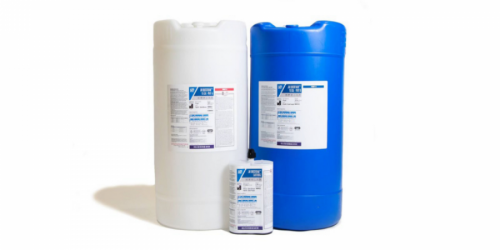Q&A Forums
Sheetrock Cracking w/ Foam Post New Topic | Post Reply
| Author | Comments |
|---|---|
|
William Gibson
Posted: Jan 27, 2009 04:42 PM
|
Sheetrock Cracking w/ Foam
Mason:We've got an interesting one, with differing opinions. In new construction we sprayed 4.5" 2lb. CC on a ceiling flat (sprayed from attic above). Months down the road the sheetrock seams on the ceiling has began to crack. In addition to this, the sheetrock has began to bow about 3/8 in. up between the studs. Again, above the sheetrock is 4.5" of CC Foam. The home is located near a lake and is in wintery conditions (1-2 ft. of snow on the ground). The sheetrock supplier and the architect are blaming it on the foam. The foam manufacturer is calling it a structural issue. We, the contractor, have not ruled out a moisture problem in the home. The general contractor and architect do not believe it (for a second) to be structural or moisture. The taping and application of joint compound may have been in a cold climate but I feel it still doesn't explain why the sheetrock is bowing. Have you heard of anything like this? |
|
John Bartlo
Posted: Jan 27, 2009 05:56 PM
|
Several years ago we experienced something similar except it was walls. When there were two studs back to back the foam in the cavities to the sides seemed to pull the studs apart and create a gap between the two back to back studs. Luckily the house hadn't gotten rocked yet. We think we were just putting it on too thick. Once we kept our lifts to 2" it seemed to work fine. At what temp was the drywall mud applied and cured? Most manufacturers require 60 degrees I believe (maybe 50) |
|
William Gibson
Posted: Jan 28, 2009 09:43 AM
|
Buffalo: We are being led to believe that drywall mud was applied at a cold temperature because of the cracking. |
|
mason
Posted: Jan 28, 2009 12:46 PM
|
Unless the foam is shrinking, (check this out by cutting out a small section next to the wood studs,) I would think the drywall is moving. I have seen closed cell foam bow out drywall when the foam is injected in a closed cavity, but not when it is applied to an open cavity. However, if the foam is not dimensionally stable and has exceptionally good adhesion to the drywall, it could bow the drywall. To minimize foam shrinkage, install your first lift less than 1 inch, wait 10 minutes before installing additonal lifts. Do not install more than 1.5 inches to 2. inches per lift. Ask your supplier for their recommendations. |





























